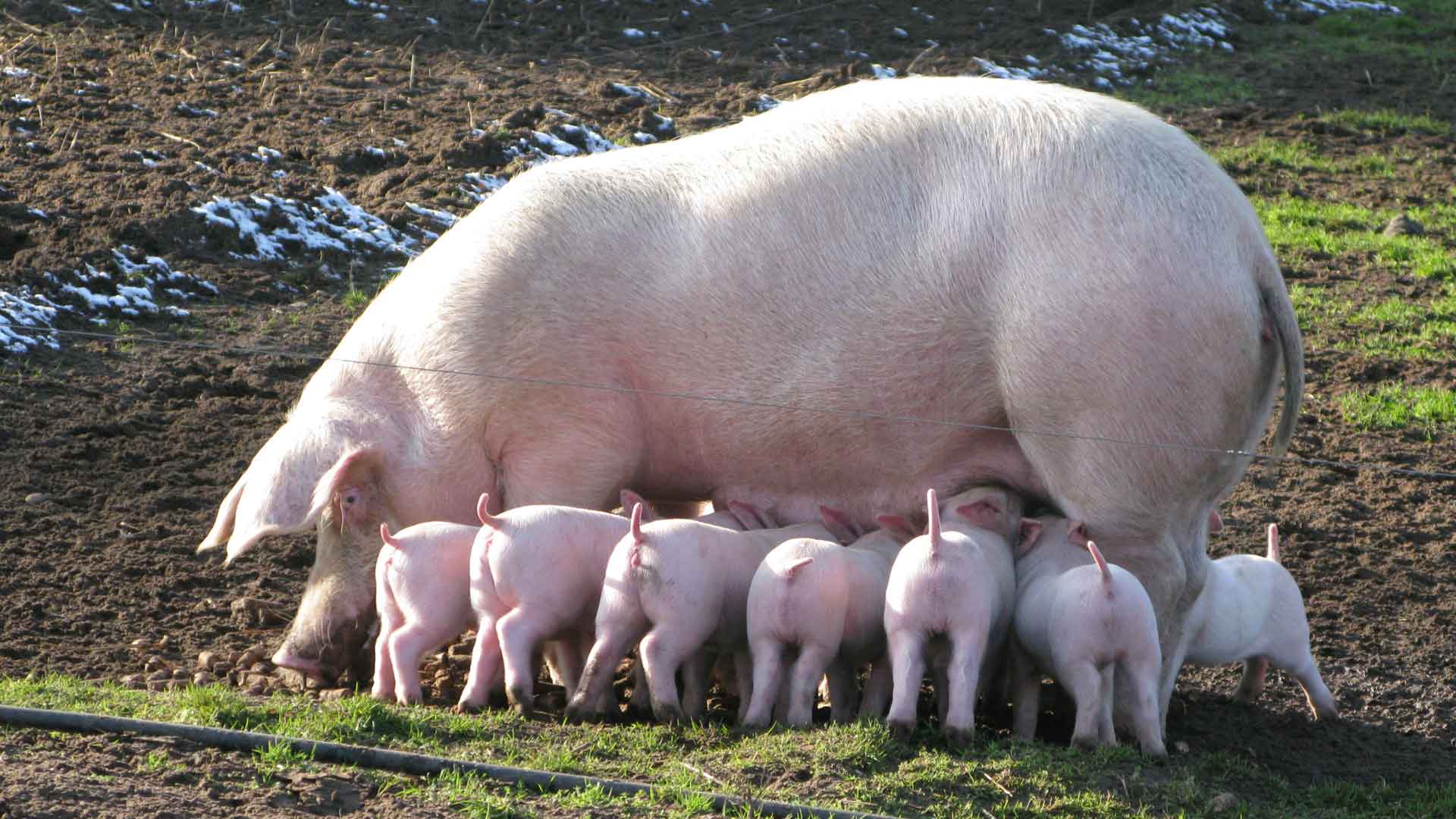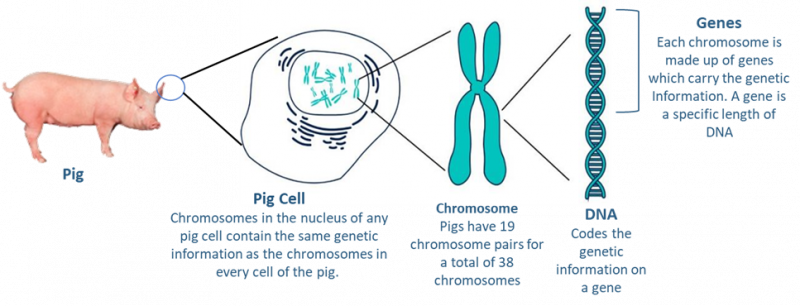
Module 1 – Introduction to Pig Production Genetics
Thursday, 2 December 2021
Good genetics is the foundation of good production
Welcome to the second of PIC’s Technical Modules-Genetics. Good genetics is the foundation of good production. The objectives of the Genetics Technical Module are to provide:
- an understanding on what PIC does as a Genetics Supplier,
- the necessary requirements to maintain good genetic progress in the genetic nucleus and
- management information on how to optimise genetic dissemination through a commercial herd so that production improvements can occur.
Through this module PIC will cover several genetics topic, including Genetic Improvement, Dissemination, Genetic Lag and Genomics amongst others. This is the first topic-Introduction to Pig Production Genetics.
Module 1 – Introduction to Pig Production Genetics
Genetics is the study of genes and how they work with an animal’s Genotype being a combination of the genetic information from its sire and dam. A Genotype is just a genetic map, which is made up of traits which sets an animal’s genetic potential. Each cell in a pig’s body has a nucleus containing the chromosomes which have that animal’s genetic information (Figure 1). Pigs have 19 chromosome pairs for a total of 38 chromosomes. Each chromosome contains many genes and every pig has two copies of each gene, one inherited from the sire, and one from the dam.
Difference in genetic make-up are known as genetic variation and traits which show large amount of genetic variation are more likely to respond to selection. These traits are a specific measurable production characteristic of a pig.The traits also vary as to the number of gene pairs that influence them; most of the economically important traits are controlled by many gene pairs.

(Adapted from: https://www.bestfunquiz.com/q/how-much-you- know-about-chromosomes-and-genes)
Difference in genetic make-up are known as genetic variation and traits which show large amount of genetic variation are more likely to respond to selection. These traits are a specific measurable production characteristic of a pig.The traits also vary as to the number of gene pairs that influence them; most of the economically important traits are controlled by many gene pairs.
Genetic Improvement
Genetic improvement from selection does not result from changes in the environment and occurs REGARDLESS of the environment where the pigs are reared. On the other hand, whether or not an animal reaches their genetic potential IS heavily influenced by the environment in which the animal is raised. Environment covers everything else that’s not genetics e.g. housing, temperature, health, nutrition, stockmanship etc. If the environment in which they’re raised is sub-optimal, an animal will not reach their full genetic potential despite having a great genotype. An animal’s characteristic traits resulting from this interaction between environment and genetics are called it’s Phenotype.
Genetic Improvement at the farm levels focuses on increasing the profitability of a commercial farm through increasing the frequency of desirable genes and decreasing the frequency of undesirable genes across the herd.
There are six key points in genetic improvement:
- Traits need to be heritable
- Variation is needed.
- Relatively short Generation Interval
- Breeding Program
- Measuring improvements
- Implementing genetic frontier technology
In the next edition of the Australian Pig Improver, we’ll look at the first three key points in Genetic Improvement.
The opinions, advice and information contained in this publication are offered by PIC Australia soley for informational purposes and it does not constitute professional, commercial or technical advice. While information contained in this publication has been formulated in good faith, the contents do not take account all the factors which need to be considered before putting the information into practice. Accordingly, no person should rely on anything contained herein as a substitute for specific advice.

